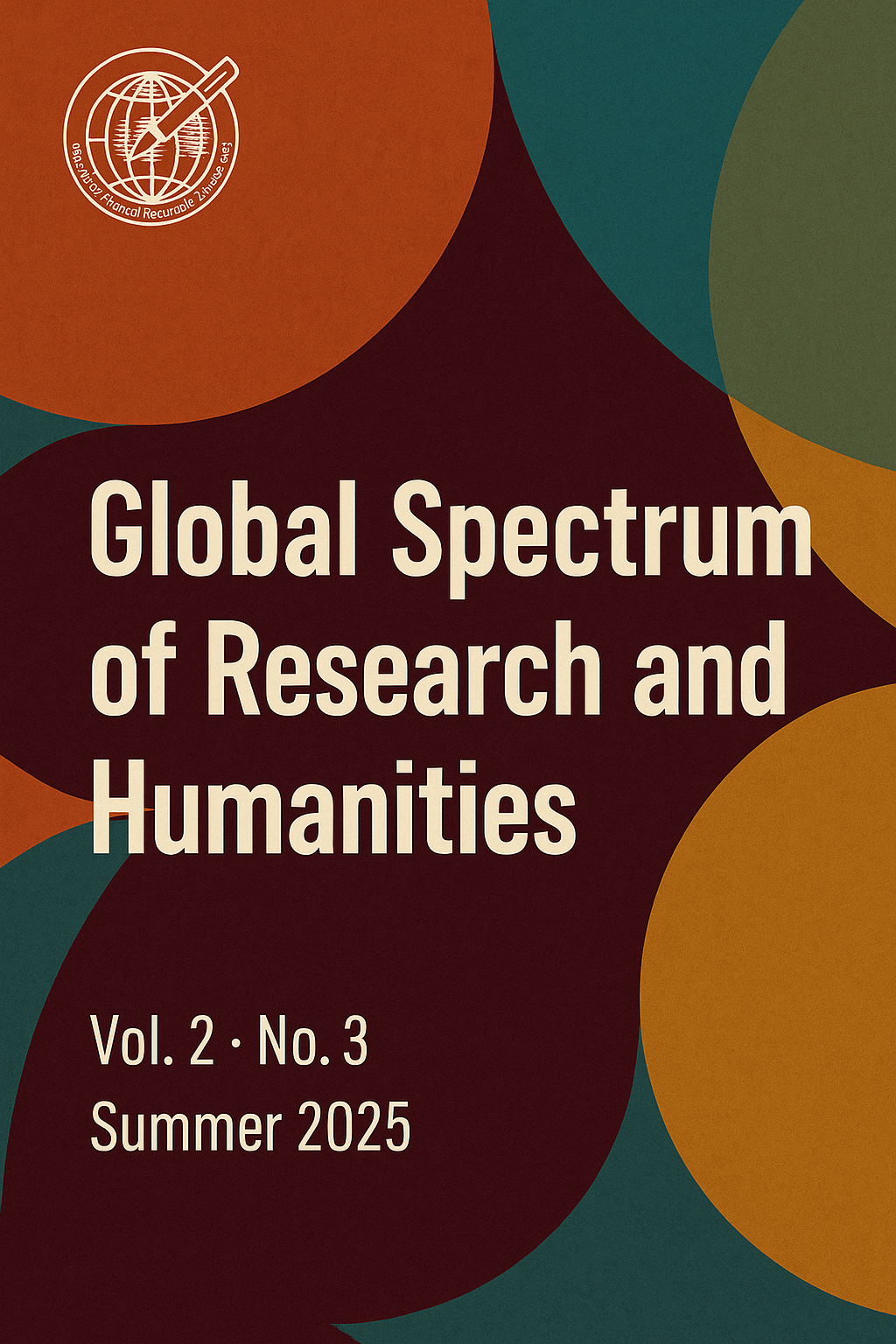Studying the Impact of Globalization on Urban Space Management: Case Study: Kabul Province Urban Management System
DOI:
https://doi.org/10.69760/gsrh.0203025006Keywords:
Competitiveness, Urban Governance, Partnership, Urban Space ManagementAbstract
The aim of this article is to study the impact of the requirements of competition between cities in the era of globalization on attracting private sector capital in urban spaces. In the era of globalization, cities are the center of attention of investors and urban managers to provide various attractions in attracting capital and competing with other cities.
However, the lack of coherent theoretical foundations from the process of competition between cities on a macro scale to the actions of city planners and urban managers on a local scale has reduced the competitive power of cities. In this study, using an inferential method, the factors affecting the competition between cities on the actions of city planners and urban managers have been discussed.
The results of this study show that in order to attract capital for the realization of urban space projects, the expectations and incentives of urban managers should be taken into account in the design and planning of urban space based on a market-oriented approach.
References
Barakpour, Nasser. (2006) Urban Governance and the City Administration System in Iran. Publisher. Urban Planning and Management Conference. March 2006, 493-3. Mashhad: Ferdowsi University. For access: https://civilica.com/doc/74704/
Carmona, M. & Magalhães, C. (2006). Innovations in the Management of Public Space: Reshaping andRefocusing Governance. Planning Theory & Practice,7,289-303.
Carmona, M., Magalhães, C., & Hammond, L.(2008). Public Space The management dimension.New York: Routledge.
Erickson, B., & Roberts, M. (1997). Marketing local identity. Urban Design, 2,35-59.
Ghasemi, Saman. (2008) Book of Methods of Financing and Foreign Investment in Projects. Place of Publication: Publication: Economic Affairs Research Institute. For access: https://tinyurl.com/mwstd2d8
Goss, S. (2001). Making Local Governance Work: Networks, Relationships and the Management of Change. Palgrave :Basingstoke.
Hajer, M., Wagenaar, H. (eds) .(2003). Deliberative Policy Analysis:Understanding Governance in the Network Society. Cambridge: Cambridge University Press.
Hall, T., Hubbard, P. (1998). The Entrepreneurial City: Geographies of Politics of Regime and Representation. Chichester: Wiley.
Hardy, H. (2004). Public Spaces:Partnership, Collaboration, Reclaiming. London :place mark award.
Healey, P. (2006). Urban Regeneration and the Development Industry. Regional Studies, 25,97-108.
Helbrecht, I. (1994). Conflict, consent, cooperation: Comprehensive planning in Germany beyond market and state In Braun GO (ed.), Managing and Marketing of Urban Development and Urban Life. Berlin :Dietrich Reimer Verlag.
Ismaeil Zadeh, Hossein; and Sarafi, Mozaffar. (2006). The place of good governance in the urban planning of Tehran Metro. Humanities Lecturer, Special Issue on Geography. 48, 10-28. For access: https://tinyurl.com/4hd7ty5f
Jones, H. (2006). Cultural Regeneration & Global Neoliberal Political Economies : Amsterdam - A Case Study. Bloomington: Indiana University.
Kashani Jo, Khashayar. (2010) Recognizing Theoretical Approaches to Public Spaces of the City. Publisher: City Identity. p. 95-107. For access: https://tinyurl.com/5bkttsx8
Knox, P. (2005). Creating Ordinary Places: Slow Cities in a Fast World. Urban Design. 10 (1), 1–11.
Kooiman, J. (2003). Governing as Governance.London: Sage.
Kotler ,P., Rein, I., & Haider ,H. D.(1993). Marketing Places: Attracting Investment, Industry, and Tourism to Cities, Regions and Nations.New York: Free Press.
Lang, J. (2005). URBAN DESIGN: A Typology of Procedures and Products- Illustrated with over 50 Case Studies. Sydney: Architectural Press.
Lang, J. (2005). URBAN DESIGN: A Typology of Procedures and Products- Illustrated with over 50 Case Studies. Sydney: Architectural Press.
Madanipour, A. (2006). Roles and challenges of urban design. Urban design, 11(2),173-193.
Miraftab, F. ( 2004). Public-Private Partnerships.The Trojan Horse of Neoliberal Development?, Planning Education and Research,1,89-101.
Morris, M. H., & Jones, F. F. (1999). Entrepreneurship in Established Organizations: The Case of the Public Sector. Entrepreneurship Theory and Practice, 24(I),65- 82.
Ngowi,P. H. (2005). Public-Private Partnership (PPPs) in the Management of Municipalities in Tanzania –Issues and Lessons of Experience. Mzumbe : Mzumbe University, Economics Department.
OECD. (2007). Competitive Cities:A New Entrepreneurial Paradigm in Spatial Development. Paris: Author.
Officer, R. R. (1999). Privatization of Public Assets. Melbourne: Melbourne Business School,University of Melbourne.
Petrakos,G. ( 2000). Economy and Space: Towards a re-examination of relationships and policies. Volos,Dept. of Planning and Regional Development, Univeristy of Thessaly eds.
Polidano, C. (2000). Measuring Public Sector Capacity. World Development, 28(5) ,805-822.
Rembeza,M., & Pancewicz, L. (2010). Public Private Partnership as an urban regeneration tool for the inner city, large-scale public spaceprojects in Poland. May18- 20 (1208-1210). Vienna: Technical University of Gdansk.
Rowley, A. (1998). Private-property decision makers and the quality of urban design. Urban Design, 3(2),151-173.
Samen Construction and Housing Company. (2005) Study report on the study of project financing solutions. Mashhad: Publisher.
Schmidta, S., & Némethb, J.(2010). Space, Place and the City: Emerging Research on Public Space Design and Planning. Urban Design, 15(4),453-457.
Sellers, J. (2002). Governing from Below: Urban Regions and the Global Economy. Cambridge: CambridgeUniversity Press.
Taqvaei, Ali Akbar; and Tajdar, Rasoul. (2009). An Introduction to Good Urban Governance in an Analytical Approach. Publisher. Urban Management, No. 33, 45-58. For access: https://tinyurl.com/bde2ryp7
Tewdwr, M.(1996). British planning policy in transition. London: UCL Press.
Woolley, H. (2003). Urban open spaces. London and New York: Spon Press.
Downloads
Published
Issue
Section
License
Copyright (c) 2025 Global Spectrum of Research and Humanities

This work is licensed under a Creative Commons Attribution-NonCommercial-NoDerivatives 4.0 International License.




